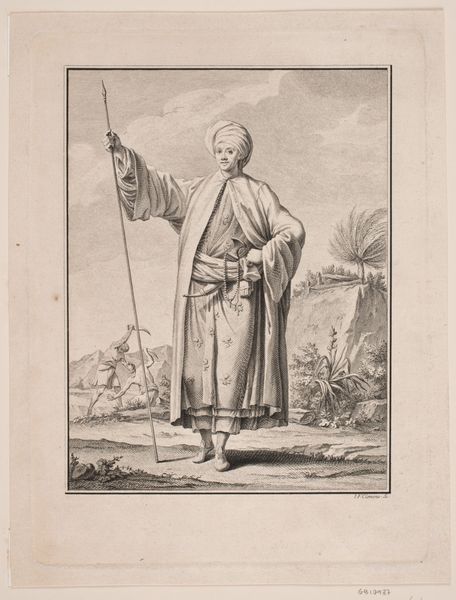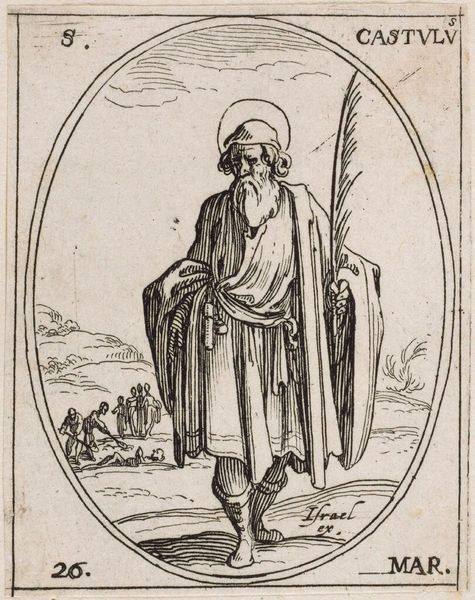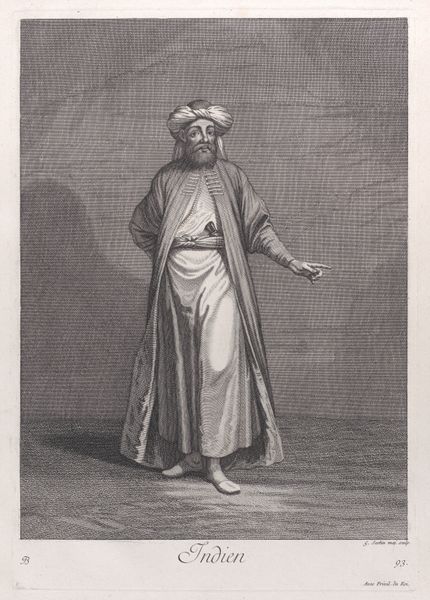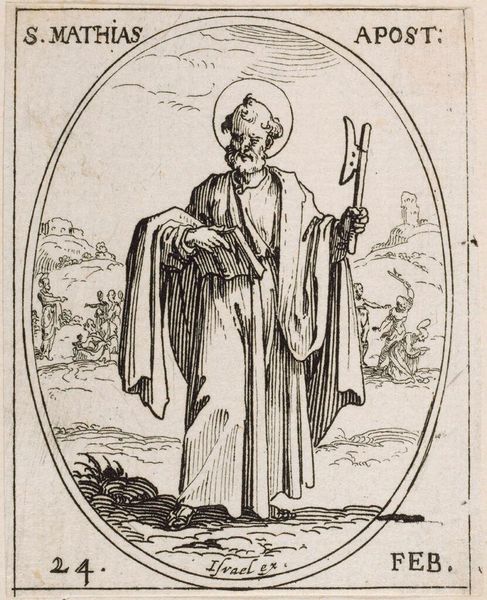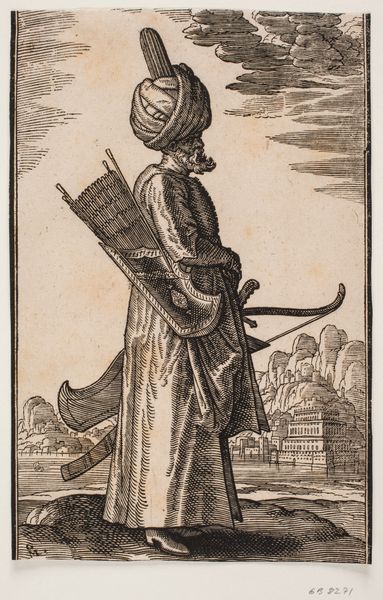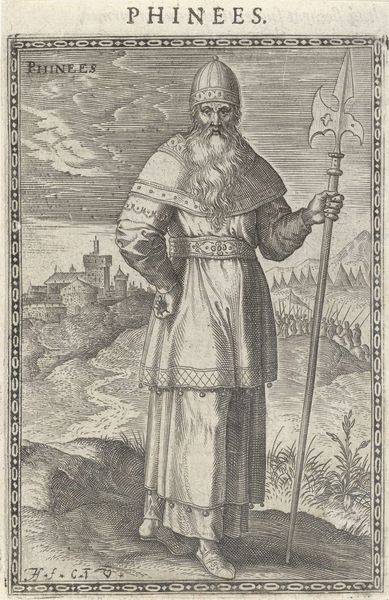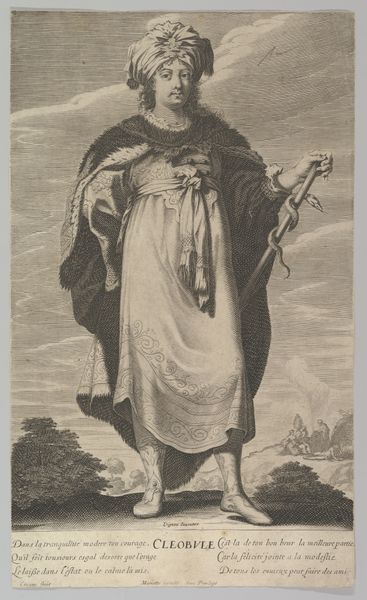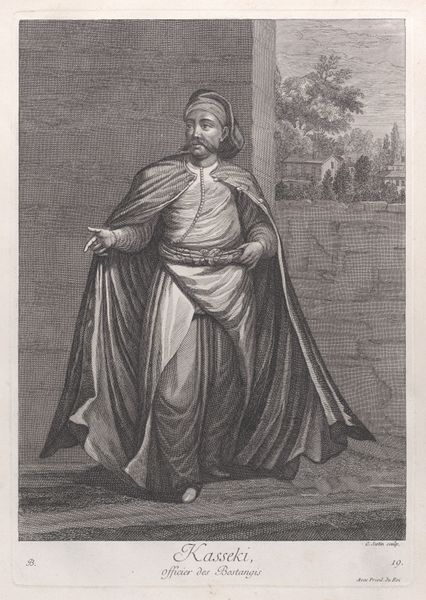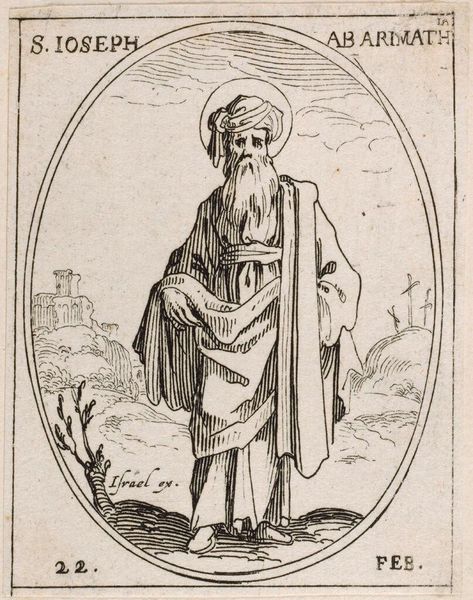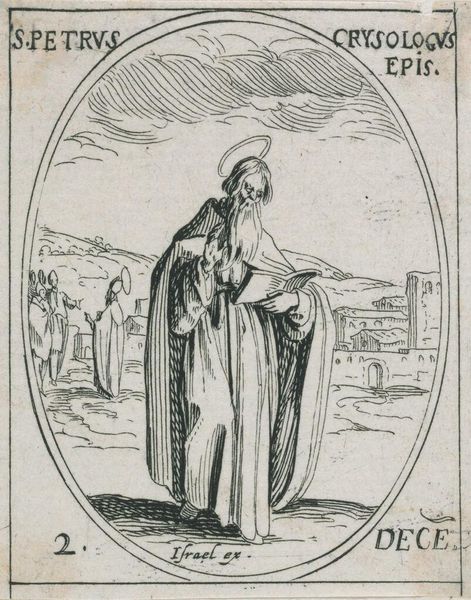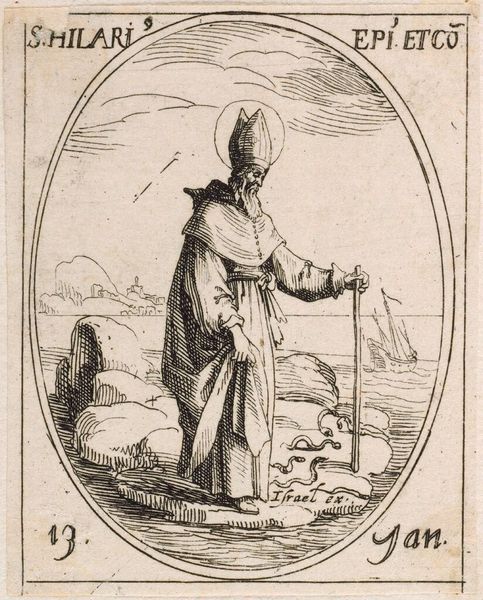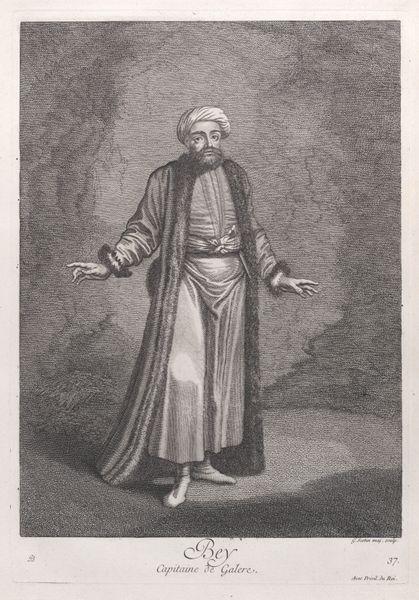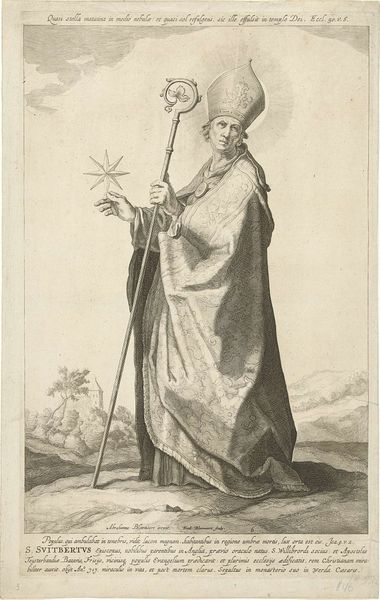
print, engraving
#
portrait
# print
#
orientalism
#
history-painting
#
engraving
Dimensions: 230 mm (height) x 172 mm (width) (plademaal)
Curator: J.F. Clemens created this engraving, "Portræt af Carsten Niebuhr i arabisk klædedragt," sometime between 1773 and 1774. What are your initial thoughts? Editor: The pose is… intriguing. He holds that spear with a confident, almost performative air. And that attire, juxtaposed against what seems like a European rendering of a Middle Eastern landscape, definitely speaks to the complexities of cultural representation. Curator: It’s all about production here, isn't it? Look closely at the lines, the meticulous cross-hatching used to create light and shadow. The labor involved in engraving such fine detail, transferring an image onto a copper plate and then to paper. Editor: Precisely! The portrait commemorates Carsten Niebuhr, the famed German cartographer and explorer. The choice to depict him in "arabisk klædedragt" raises important questions. Was it intended to celebrate his experiences or to exoticize him within a European gaze? What power dynamics are at play when portraying another culture? Curator: Power dynamics are inherent, for sure, in commissioning and creating portraits. Here the choice of materials - the metal, the inks - signifies stability. Engravings could be reproduced, consumed by a broader public than a painting. Was this print meant to solidify Niebuhr’s reputation and contribution to geographical science? Editor: Yes, and how that science served colonial ambitions. Think about it: Niebuhr's travels were inherently linked to the Enlightenment’s drive for knowledge, which often served as a pretext for exploitation. That figure battling in the back seems significant, is he local? Or a signifier of "otherness," set against Niebuhr's civilized pose? The artwork’s engagement with Orientalism needs unpacking! Curator: Indeed, and don't discount Clemens’ mastery of the engraving technique. His expertise wasn't solely technical, his skills were used in a variety of contexts, making prints widely available and accessible. That level of skill demanded considerable time and dedication in service of replicating or, in some instances, disseminating ideology. Editor: Ultimately, analyzing this engraving prompts crucial discussions regarding the intersections of representation, identity, and historical context. Curator: Absolutely! The material object opens up narratives that help expose social realities.
Comments
No comments
Be the first to comment and join the conversation on the ultimate creative platform.
